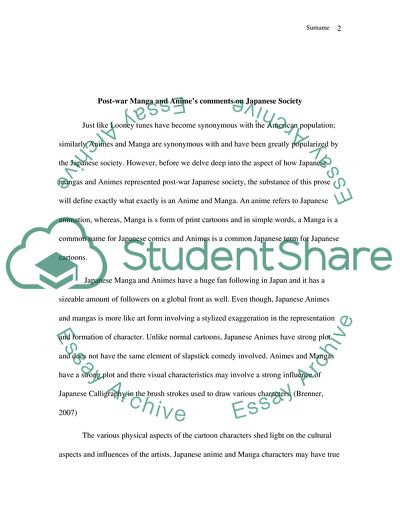Cite this document
(Post-War Manga and Animes Comments on Japanese Society Essay - 2, n.d.)
Post-War Manga and Animes Comments on Japanese Society Essay - 2. https://studentshare.org/culture/1751491-culture-and-society-in-japan
Post-War Manga and Animes Comments on Japanese Society Essay - 2. https://studentshare.org/culture/1751491-culture-and-society-in-japan
(Post-War Manga and Animes Comments on Japanese Society Essay - 2)
Post-War Manga and Animes Comments on Japanese Society Essay - 2. https://studentshare.org/culture/1751491-culture-and-society-in-japan.
Post-War Manga and Animes Comments on Japanese Society Essay - 2. https://studentshare.org/culture/1751491-culture-and-society-in-japan.
“Post-War Manga and Animes Comments on Japanese Society Essay - 2”. https://studentshare.org/culture/1751491-culture-and-society-in-japan.


